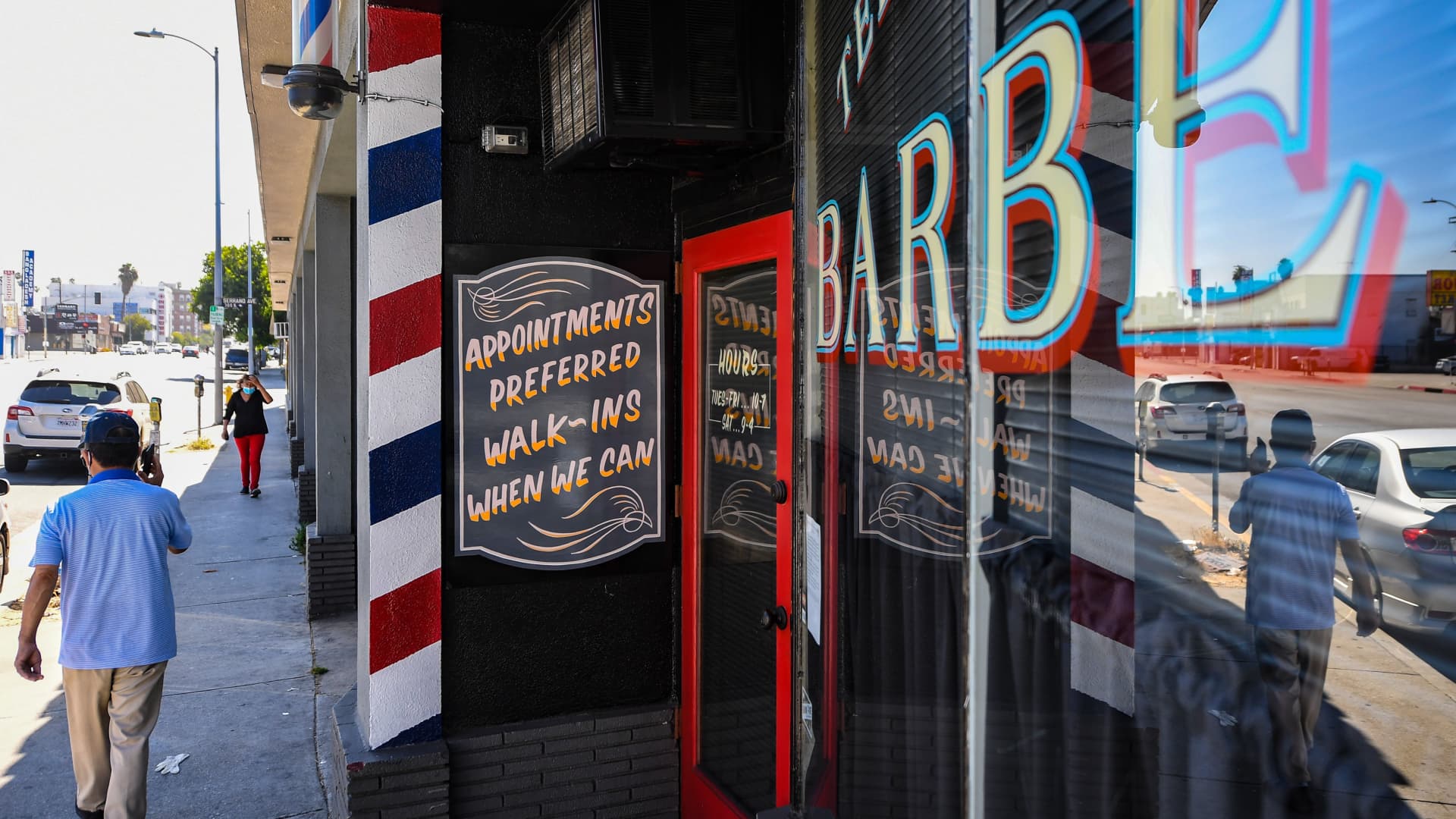Products You May Like
Inflation in the U.S. economy is on the retreat. But the road to ultimate victory may be harder than what’s come already, some economists argue.
“The so-called last mile is going to get a lot trickier,” Mohamed El-Erian, chief economic advisor at Allianz and president of Queens’ College at the University of Cambridge, recently told CNBC.
“We’re not going to have the tailwinds that we had, and we’re going to have some headwinds,” he said.
Inflation measures how fast prices are rising for goods and services — anything from concert tickets and haircuts to groceries and furniture. Policymakers aim for a roughly 2% annual inflation target.
The consumer price index — a key inflation barometer — has fallen gradually from a 9.1% pandemic-era peak in June 2022 to 3.4% in December 2023, within striking distance of the target.
This final disinflationary hurdle will be a challenge without curtailing economic growth and risking recession, a dynamic that would likely crimp consumer demand and rein in prices, economists said.
“One theme is clear — the transition from 8-4% inflation is easier than the transition from 4-2% inflation,” Gargi Chaudhuri, head of iShares investment strategy for the Americas at BlackRock, wrote about the recent CPI report.
Why goods won’t be much help
This difficulty with reducing inflation is largely centered on the “services” side of the economy, according to economists. Think of services as things we can experience, like rent, auto repairs, haircuts, veterinary visits, theater tickets and medical care.
Goods, on the other hand, are tangible things like cars and clothes. They account for 21% of the consumer price index (after stripping out items in the food and energy categories).
More from Personal Finance:
Why egg prices are on the rise again
A 12% retirement return assumption is ‘absolutely nuts’
Here’s where prices fell in December 2023, in one chart
Inflation among these so-called “core” goods peaked more than 12% in 2022 but is now near zero as supply chains have normalized.
That means further broad disinflation likely won’t come from consumer goods, economists said. In fact, attacks by Houthi rebels on ships in the Red Sea threaten to disrupt a key transit corridor and may trigger higher goods inflation if it persists, El-Erian explained.
Where inflation has been ‘sticky’
Inflation among services has been more stubborn, though. And consumers spend more on services, which account for 59% of the CPI (after stripping out energy services).
While down from more than 7% last year, services inflation still sits at 5.3%. A big reason for that persistence: housing, which accounts for more than a third of the overall CPI.
“The shelter inflation component is the part that has remained quite sticky,” Chaudhuri said in an interview.
Economists expect shelter inflation to moderate. It’s just a matter of when and how quickly it happens.
For example, prices for newly signed leases appear to have deflated: The New Tenant Rent Index declined to about -5% in Q4 2023, a significant drop from +3% in Q3, according to Bureau of Labor Statistics data issued last week.
It takes a while for such data to feed through into the Labor Department’s CPI calculations, economists said.
“I think it’ll take most of the year to get back to target” on inflation, largely because of shelter, said Mark Zandi, chief economist at Moody’s Analytics.
Labor-market dynamics are also an important component of “services,” economists said.
A hot job market has meant strong wage growth for workers. That dynamic can underpin inflation if businesses raise prices quickly to compensate for higher labor costs and if larger paychecks lead to more spending by consumers.
The so-called last mile is going to get a lot trickier.Mohamed El-Erianchief economic advisor at Allianz and president of Queens’ College at the University of Cambridge
Wage growth needs to be about 3.5% a year, on average, to achieve target inflation, Chaudhuri said. But hourly earnings growth is currently about 4.1% for private-sector workers, for example.
Further, businesses have learned they can raise prices and consumers will keep spending (so far, at least). That doesn’t give businesses much incentive to pump the brakes, said Sarah House, senior economist at Wells Fargo Economics.
“I think the taboo of not raising prices on consumers for fear of losing their business was broken in the pandemic,” House said.
Absent weaker consumer demand — and weaker economic growth — it may be hard to unwind business owners’ mindset, she said.
Why this may all be ‘nonsense’
Not all economists think the last mile of disinflation will be harder than what came before, however.
Paul Ashworth, chief U.S. economist at Capital Economics, called the theory “nonsense” in a recent research note, for example.
Largely, that’s because, by one measure, the inflation battle is already nearly won, he said. The Federal Reserve’s preferred inflation gauge is the Personal Consumption Expenditures price index; in November, the PCE index was running at a 1.9% six-month annualized rate, “which means it was already below target,” Ashworth said.
“All the Fed needs to see is that slower pace of price increases being sustained for a little longer,” he wrote.
